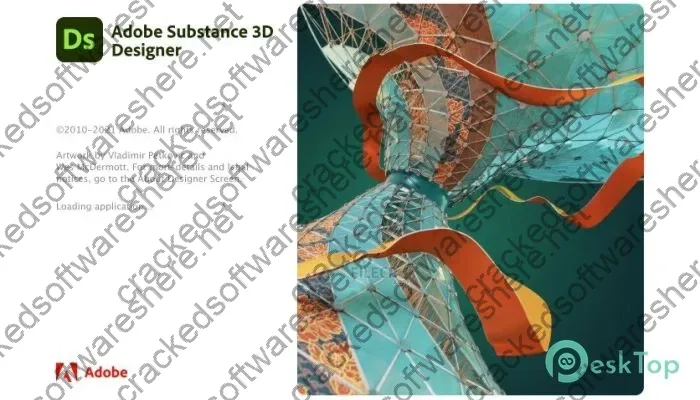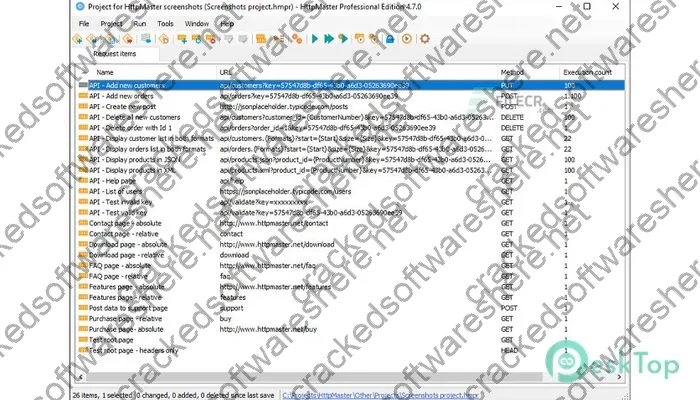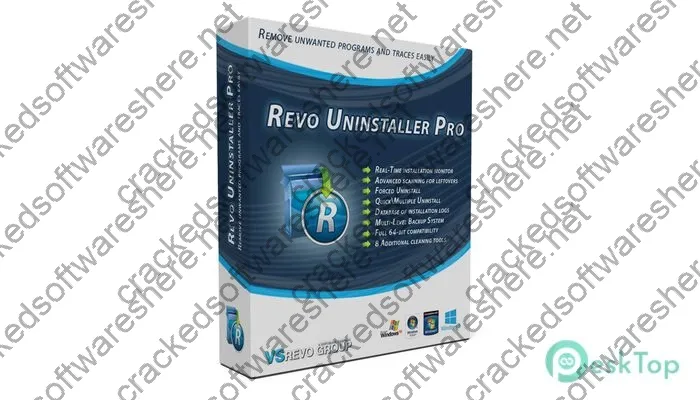Adobe Substance 3D Designer Keygen is a powerful tool for creating PBR-ready 3D textures and materials. In this in-depth guide, we’ll cover everything you need to know about Substance Designer’s features, workflow, and integration into 3D applications.
- What is Adobe Substance 3D Designer Keygen?
- Key Features and Capabilities
- Creating Materials in Adobe Substance 3D Designer Keygen
- Painting and Masking in Substance 3D Designer Keygen
- Key Tools and Workflow Tips
- Example Textures and Materials
- Integrating Materials into 3D Applications
- Why Choose Adobe Substance 3D Designer Keygen?
- Get Started with Adobe Substance 3D Designer Keygen
- Frequently Asked Questions
What is Adobe Substance 3D Designer Keygen?
Adobe Substance 3D Designer Download free is a procedural texturing and material creation tool originally developed by Allegorithmic before being acquired by Adobe in 2019. It allows artists to quickly generate complex PBR-ready textures and materials for use in 3D animations, visual effects, games, product designs, and more.
Substance Designer uses a node-based workflow that enables textures to be created algorithmically using custom parameters and image inputs. This procedural approach allows unique, complex materials to be created and modified far more quickly than manual texturing in other applications. Materials can be visualized in real-time 3D as parameters are tweaked.
Some of the key capabilities and benefits of Substance 3D Designer include:
- Procedural texturing for quickly generating complex materials
- Intuitive node-based workflow for creating custom materials
- Vast material library with over 1000 customizable PBR materials
- Powerful painting tools for adding details and imperfections
- Real-time 3D visualization and rendering of materials
- PBR support for physically-based shading
- Exporting of complete texture maps for usage in 3D software
- Integration with Adobe Creative Cloud apps like Photoshop
Whether you’re a 3D artist, designer, architect, or game developer, Substance 3D Designer offers a powerful toolset for quickly developing production-ready textures. Its procedural approach allows far more creative flexibility compared to traditional UV mapping and texturing.
Key Features and Capabilities
Substance 3D Designer Keygen comes packed with features to empower 3D artists and designers to quickly create complex materials. Here are some of the key capabilities:
Procedural Texturing
The core of Substance 3D Designer is its procedural texturing workflow. Rather than manually painting textures, materials are created algorithmically using a node-graph workflow. Hundreds of adjustable nodes allow you to dial in perfect colors, roughness, metallicness, normals, displacement and more. Proceduralism is perfect for quickly generating variation and unique designs.
Intuitive Node-Based Workflow
An easy-to-use node editor allows you to build custom material graphs using a range of included nodes. Connect them together like a flowchart and tweak parameters to create near-infinite material designs. Custom nodes can also be created using JavaScript and the Substance plugin SDK. Real-time 3D visualization updates results instantly so you can iterate and experiment.
See also:
Classroom Spy Professional Serial key 5.1.10 + Activator Free
Advanced Material Editing Tools
Substance provides complete control over PBR material properties. Adjust base colors, roughness, metallicness, specular reflections, transparency, normals, displacement, ambient occlusion and more using dedicated nodes. Visualize results in real-time 3D. Advanced masking tools also allow you to paint directly on textures to create variation and imperfection.
Vast Material Library
Choose from over 1000 free and premium PBR-ready materials in the Substance Source library including fabrics, metals, tiles, nature, plastics, and more. Tweak them to your needs or use them as a starting point for your own materials. This saves huge amounts of time compared to creating materials completely from scratch.
PBR and Physically-Based Rendering
Substance materials are compatible with PBR or physically-based rendering, used in 3D apps and game engines today. This more realistic lighting model allows you to set precise physical parameters like metalness, roughness, and reflectivity to achieve realistic results. Substance integrates tightly with PBR pipelines.
Export Textures and Share Materials
When finished, export complete texture maps like diffuse, normals, roughness, metalness, emissive, opacity, displacement and ambient occlusion for use in 3D software. Materials can also be published and shared via Adobe’s cloud library for others to customize.
With its unmatched procedural texturing capabilities, vast material library, and intuitive workflow, Substance 3D Designer Full version crack offers a powerful arsenal of tools for 3D artists and designers. Next let’s walk through creating materials in Substance Designer from scratch.
Creating Materials in Adobe Substance 3D Designer Keygen
Creating a material in Substance Designer involves using a node-based graph workflow to build up layers of color, texture, lighting properties, and more. Here is an overview of creating and working with Substance materials:
Building a Material Graph
The foundation of your material is the graph itself. Begin with a basic output node then add and connect nodes to build up material properties like color, metallic, roughness, normal, and height. Hundreds of nodes allow you to dial in your perfect look.
Modifying PBR Properties
Add a roughness, metallic, or reflectivity node and connect it to the main output to adjust physical material characteristics. See how they interact and affect lighting in the real-time 3D viewport. Use masks to blend between different settings.
Import External Textures
Import external JPGs, PNGs, TIFFs, or other images to use as layers in your graph. This adds high-resolution details to your procedural materials. You can also begin with a smart material from the Substance Source library.
Generating Unique Variations
Adjust the randomSeed parameter on nodes like noised-based generators to instantly create unique material variations. This is the power of procedural texturing. Randomize multiple properties for limitless possibilities.
Visualizing in Real-Time 3D
The built-in 3D viewport updates in real-time as you work. See how lighting interacts with your current settings for roughness, metallic, normals, and more. Iterate and experiment without needing to export to other apps.
By connecting together nodes into complex graphs, you can build up layered materials with fine control over every property. Next we’ll explore Substance Designer’s painting, masking, and editing tools.
See also:
IObit Software Updater Pro Keygen 6.3.0.15 Pre-Activated Free
Painting and Masking in Substance 3D Designer Keygen
While its procedural capabilities are invaluable, Substance also provides robust tools for painting directly onto materials. Here are some of the key painting and masking features:
Paint with Custom Brushes
Choose from a range of included brush types or import your own custom brushes. Adjust size, hardness, and other parameters. Paint directly onto textures to modify their look or add imperfections.
Mask Out Areas
Use lasso, magic wand, and other tools to mask out specific areas of textures. Masks control how effects are selectively applied. For example, add wear only onto edges and corners.
Modify Textures
Paint, blur, clone, lighten, darken, and more to selectively modify areas of textures. Add dirt, scratches, stains, and other imperfections to increase realism using these effects.
Leverage Smart Materials
With smart materials, layers automatically adjust based on set rules and masks. For example, apply damage only where a wear mask is painted. This automates adding variation.
Increase Realism
Hand-painted touches like dirt, scratches, and stains blended into otherwise procedural materials adds crucial realism. Substance Painter makes this detailing easy.
Masking and painting allow you to easily incorporate imperfections and fine details that would be tedious or impossible to create procedurally. This hybrid workflow gives you the best of both worlds.
Key Tools and Workflow Tips
Here are some key tips and workflows to optimize the creation of high quality, production-ready materials in Substance 3D Designer:
-
Use anchors – Anchors allow material properties to be linked and updated together when editing graphs. This avoids repetitive work.
-
Create smart materials – Build graph templates with masks, rules, and generators to quickly create material variations.
-
Use GPU rendering – Enable GPU rendering for smoother real-time 3D visualization while editing graphs. An NVIDIA RTX card is recommended.
-
Mind the UVs – When baking textures, create proper UVs with enough padding space and no overlapping.
-
Blend layers – Use blend modes like overlay when combining layers to create rich, complex materials.
-
Export often – Export texture maps periodically as backups in case you need to revert back to an earlier version.
-
Learn shortcuts – Hotkeys for copying nodes, viewing nodes, viewing textures, playing/pausing viewport, etc. speed up workflow.
Leveraging these tips and features will help you work faster and maximize the quality of your procedural materials.
See also:
Example Textures and Materials
To help you better understand the textures and materials possible with Substance 3D Designer, here are examples of different material types:
Metals
Substance Designer excels at creating realistic metals with precise control over reflectivity, roughness, oxidation, grooves, and more.
Fabrics
A range of smart materials, wave generators, and effects make generating intricate fabrics quick and easy.
Wood
Use masks and effects to add realistic knots, grains, stains, and aging to both real-world and fantasy woods.
Concrete
Procedural noise patterns and painting effects like dirt, stains, and puddles create photorealistic concrete textures.
Nature
Specialized nodes for leaves, bark, rocks, terrain, moss and other natural materials produce realistic organic textures.
The possibilities are endless! By blending procedural generation with hand-painted touches, you can create realistic, one-of-a-kind textures for any surface imaginable.
Integrating Materials into 3D Applications
Once you’ve created materials in Free download Substance 3D Designer, you’ll want to integrate them into your 3D projects. Here are some tips:
Export Texture Maps
Export finished bitmap texture maps like diffuse, normal, roughness etc. in formats like JPEG, PNG, TIFF for use in 3D apps. Zipped SBSAR packages can also be exported.
Set up Materials
In your 3D software like Blender, Maya, or 3ds Max, use the texture maps to create a PBR material that matches Substance Designer properties.
Use in Game Engines
Substance materials work excellent in game engines like Unity and Unreal. Texture parameters match common game engine shader inputs.
Update Materials
Tweak your Substance graphs and simply re-export to update materials across projects. Global changes update everywhere.
With real-time 3D material visualization and previewing, getting assets from Substance Designer into 3D apps and engines is smooth and efficient.
See also:
DriverMax Pro Activation key 16.11.0.3 + Lifetime License Key
Why Choose Adobe Substance 3D Designer Keygen?
There are many solutions for texture painting and editing, but Substance 3D Designer Keygen stands above the rest for its procedural capabilities. Here are some of the key advantages it provides:
Limitless Material Possibilities
The procedural workflow empowers infinite material designs rather than manually painted textures. Easily generate complex variations.
Intuitive Workflow
The logical node-based framework with real-time 3D visualization accelerates and simplifies the material creation process.
Integration with Adobe Apps
As part of Adobe Creative Cloud, Substance 3D Designer integrates tightly with Photoshop and other apps.
Huge Material Library
Tap into the massive library of Substance Source materials for a head start on texturing projects big and small.
Industry Adoption
Leading 3D studios like Blur, Blizzard, and Ubisoft use Substance for its speed and quality. It’s a 3D industry standard.
For professional 3D texturing, no other tool combines procedural power, customization, and painterly workflows like Substance Designer. It provides a tremendous advantage for solo artists and big studios alike.
See also:
Get Started with Adobe Substance 3D Designer Keygen
Ready to start exploring the texturing superpowers of Adobe Substance 3D Designer Download free? Here’s how to get going:
Download a Free Trial
Try the latest version of Adobe Substance 3D Designer Keygen free for 30 days. Requirements: Windows 10 or Mac OSX 10.12 and higher.
Browse the Documentation
Comprehensive documentation covers every tool and workflow in detail. Great for learning.
Take a Course
Many courses at Pluralsight, Udemy, LinkedIn Learning and other online learning platforms teach Substance skills.
Join the Community
The official Substance forums and Facebook groups offer inspiration, troubleshooting help, and tips from fellow users.
Upgrade to a Paid License
Permanent licensing starts at $149/month with discounts available. Business and enterprise plans are also available.
In no time you’ll be procedurally generating incredible materials faster than ever before. Download Substance 3D Designer today!
Frequently Asked Questions
Here are answers to some common questions about getting started with Full version crack Adobe Substance 3D Designer Keygen:
What are the system requirements?
Windows 10 64-bit or Mac OSX 10.12 and later. A dedicated NVIDIA or AMD GPU is recommended. 16GB of RAM is ideal.
What file formats can it import/export?
Substance 3D Designer supports PNG, JPG, TIFF, PSD, EXR, SBSAR and more. Materials can be published in customizable SBSAR packages.
Can I customize and script my own tools?
Yes, you can create custom nodes and plugins using the Substance Automation Toolkit and Python API.
How difficult is it to learn?
The interface is intuitive but mastering procedurally generating complex materials does take practice. Expect a learning curve.
What training resources are available?
Adobe provides e-learning courses and has a Discover section inside Substance 3D Designer with useful tutorials and tips.
From beginners to seasoned 3D pros, Substance 3D Designer has something to offer at all skill levels. Download a trial and see the creative doors its procedural texturing powers can open for you!



